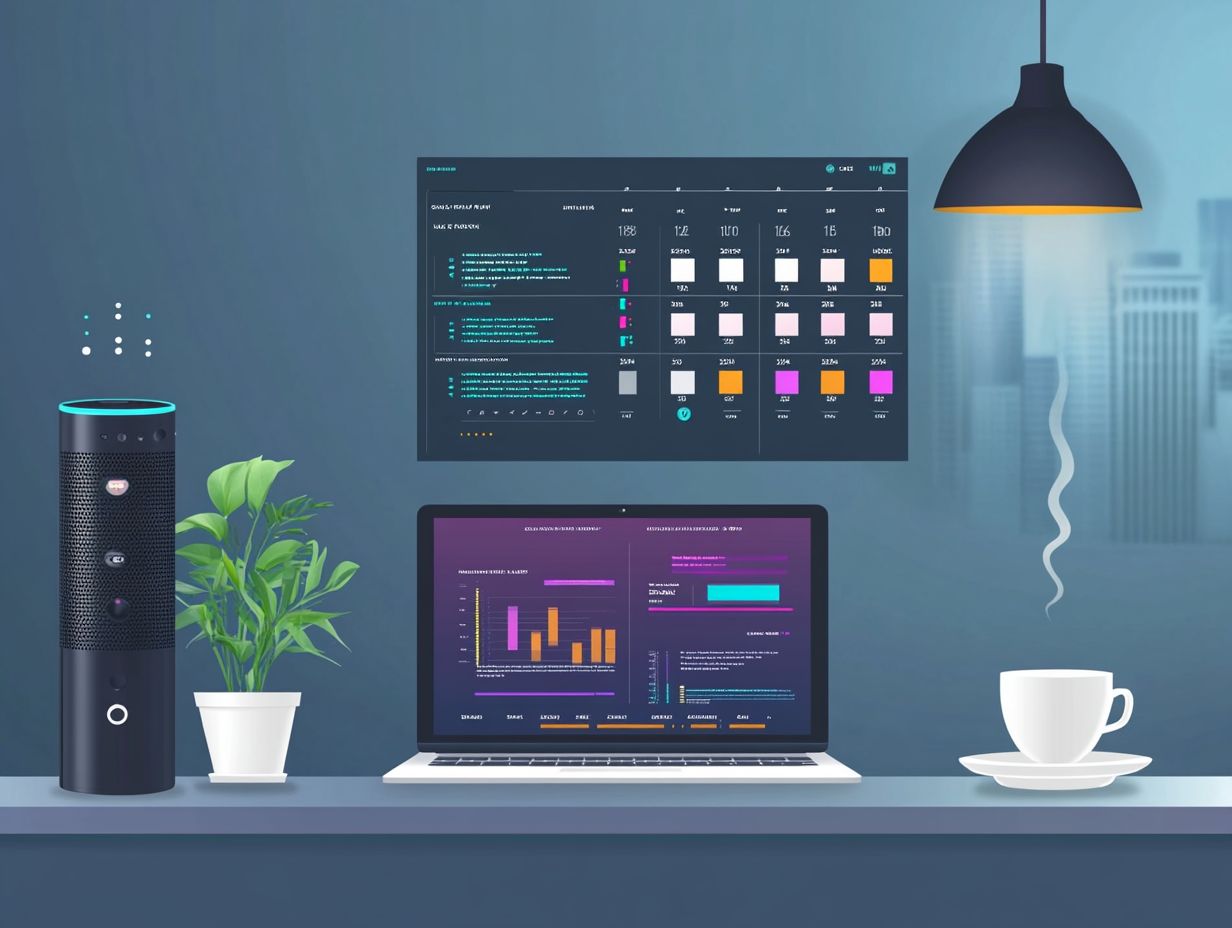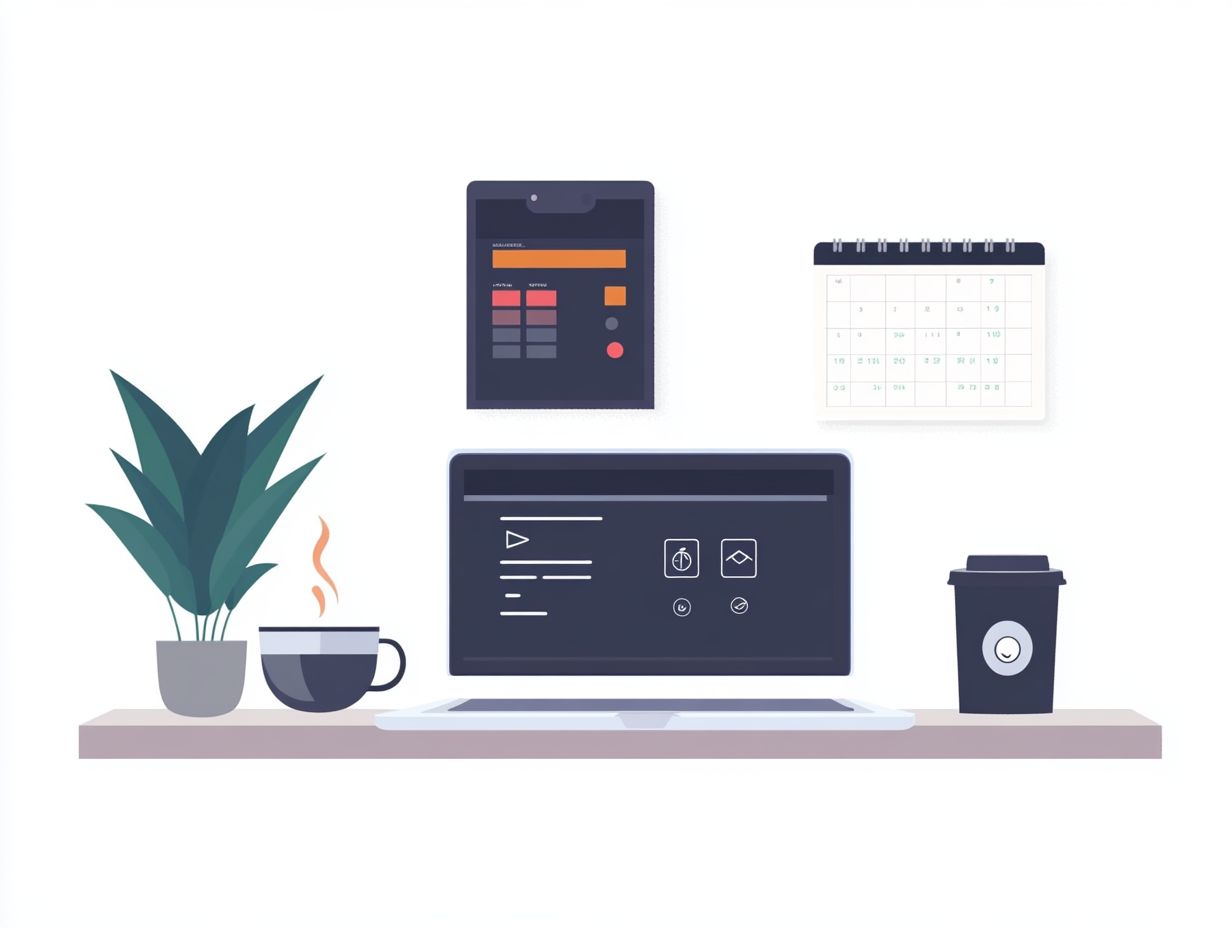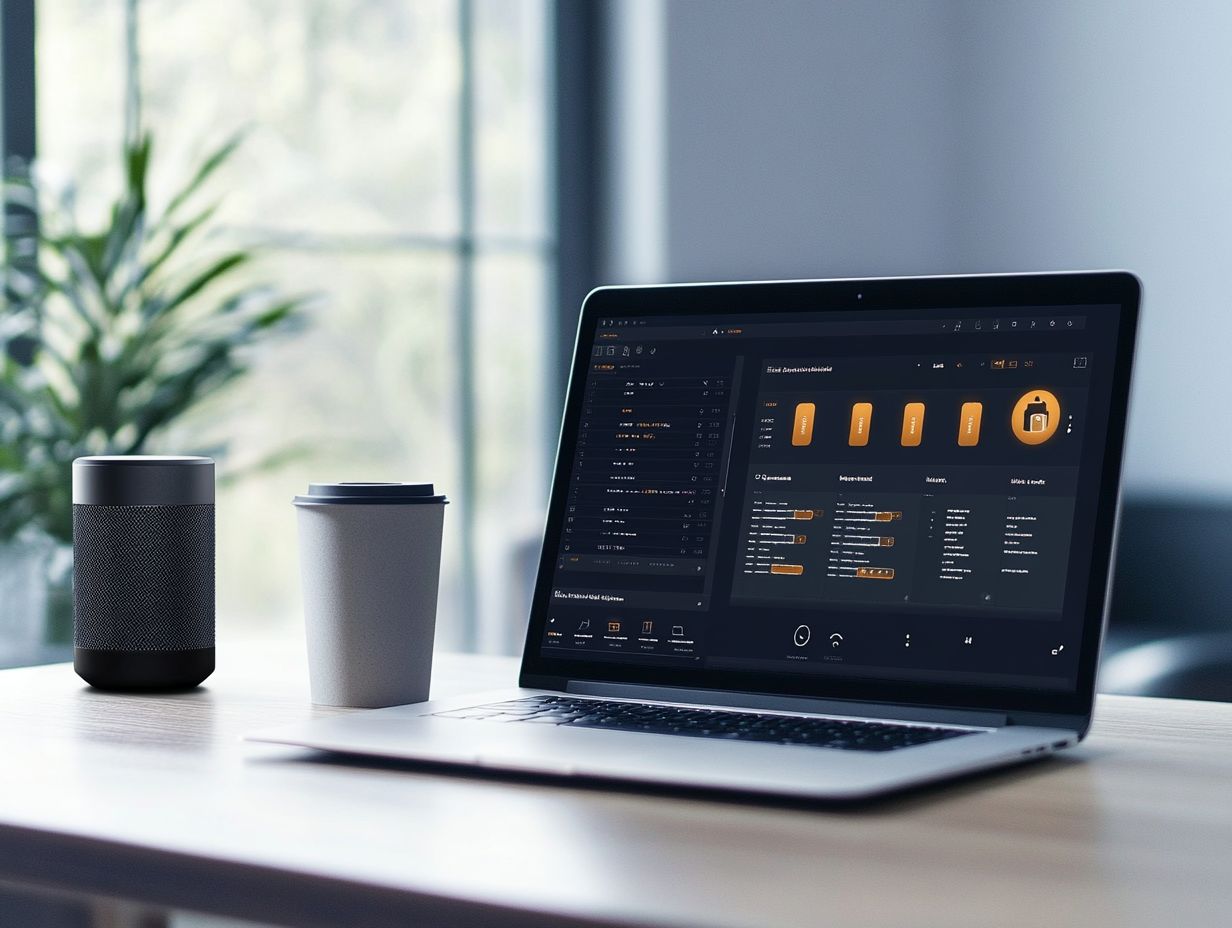Automation presents a powerful solution to streamline our daily routines, enabling individuals to reclaim valuable time and alleviate stress through various life hacks and efficiency techniques.
This article will delve into the benefits of automating aspects of life, highlighting how it can enhance efficiency and lighten mental burdens. It will also outline practical strategies for automating daily tasks, utilizing technology, tools, and apps, and creating a personalized automation plan.
Additionally, potential challenges will be discussed to ensure that individuals can maintain balance and control while adopting a more automated lifestyle. Join in to explore how you can transform your life through the art of automation and smart home technology.
What is Automation and Why is it Useful?
Automation involves the use of technology and tools to carry out tasks or workflows with minimal human involvement, greatly improving efficiency and productivity in many areas of life.
By utilizing automation, individuals can simplify their daily routines, manage their time more effectively, and optimize a range of tasks, from simple reminders to intricate project management processes, utilizing AI and artificial intelligence.
This approach not only enhances organization but also aids in making smarter decisions in both personal and professional settings, making it an essential asset in today s fast-paced environment.
Benefits of Automating Your Life
Automating various aspects of your life can offer numerous advantages, such as improved productivity and efficiency. This allows you to concentrate on what really matters while lightening the mental burden of everyday tasks.
With the appropriate automation tools and applications, you can establish structured routines that significantly enhance your time management and organizational skills. By simplifying routine processes and learning how to save time on your morning routine, you can attain a better work-life balance and experience lower stress levels, all of which contribute to personal growth, self-improvement, and personal development.
Increased Efficiency and Time Management
One of the significant advantages of automation is the considerable increase in efficiency and time management it provides, allowing individuals to complete tasks with enhanced speed and accuracy. By automating repetitive workflows, you can free up time to concentrate on more complex or creative activities, ultimately leading to a more satisfying daily experience. With tools specifically designed for optimizing scheduling, setting reminders, and even delegating tasks, automation becomes a valuable ally in achieving your goals and enhancing personal productivity.
Utilizing project management software can revolutionize team collaboration by enabling real-time updates and fostering transparency in workflows. Automation tools such as Zapier or Integromat can streamline cross-app integration, minimizing the need for manual data entry tasks, which can often be tedious and error-prone.
Email automation systems improve communication efficiency by segmenting audiences and scheduling messages, ensuring that follow-ups occur in a timely manner. Additionally, implementing time-tracking tools can reveal inefficiencies within daily operations, facilitating targeted improvements.
Ultimately, embracing these various techniques not only enhances productivity but also contributes to a more organized and less stressful work environment.
Reduced Stress and Mental Load
Reducing stress and mental load is a key advantage of incorporating automation into one s daily life, as it helps streamline the chaos of managing multiple responsibilities. By automating routine tasks such as meal planning, budgeting, and even habit tracking, individuals can relieve themselves of the constant pressure to remember every detail. Utilizing AI tools can further enhance this process by providing intelligent algorithms for better decision-making.
This approach not only encourages a healthier lifestyle but also promotes self-care, mindfulness, and digital decluttering, allowing for greater focus on personal well-being.
For example, utilizing meal prep services or grocery delivery apps can alleviate the burden of grocery shopping and cooking, freeing up time that can be spent on relaxation or exercise. Similarly, automated budgeting tools and finance automation can help track spending habits and remind users of upcoming bills, thereby reducing financial anxiety.
Habit-tracking apps, which send reminders for activities like water intake, meditation, or exercise, encourage consistency in self-care practices without the need for continual mental effort.
By establishing these automated systems, individuals can foster a more peaceful daily experience, paving the way for enhanced mental clarity and resilience against stress. Additionally, automation scripts and API integrations can further streamline complex tasks, making life easier.
Ways to Automate Your Life
There are many effective methods to automate aspects of daily life by utilizing technology and a variety of applications specifically designed to simplify tasks and enhance overall efficiency. Digital tools and techniques like cloud storage and data backup can also play a significant role in maintaining organized systems.
For instance, automating reminders for important events or configuring smart home devices for better energy management can greatly streamline your routine.
By incorporating these tools into your daily activities, you can gain greater control over your time and boost your productivity, ultimately making life more manageable and enjoyable.
Automating Daily Tasks and Chores
Automating daily tasks and chores stands out as one of the most effective strategies for enhancing productivity and reclaiming valuable time in your day. By leveraging technology and applications to automate everything from grocery shopping to cleaning schedules, you can significantly reduce the burden of routine activities. Implementing time-saving strategies, such as meal planning tools and smart home devices, not only simplifies life but also enables you to focus more on personal interests and self-improvement. Additionally, self-scheduling systems and remote monitoring can provide an extra layer of convenience. For more insights, check out streamlining your workload.
For example, utilizing grocery delivery services that connect with your preferred supermarket can greatly streamline your shopping experience, allowing you to create and schedule weekly orders with just a few taps on your smartphone. Similarly, meal prep platforms can provide recipe suggestions tailored to your dietary needs while automating reminders for ingredient purchases.
Home assistants can take charge of your cleaning schedules, ensuring that robotic vacuums and washing machines operate while you are away or engaged in more enjoyable pursuits. These modern solutions allow individuals to spend less time on mundane tasks, ultimately creating more opportunities for creative endeavors and quality time with loved ones.
Using Technology and Apps
Leveraging technology and applications is crucial for effective automation, as they offer the necessary tools to streamline various aspects of daily life. From task management to goal setting, there is an abundance of applications designed to meet diverse needs and preferences, ultimately enhancing overall productivity. By selecting the right automation tools, individuals can establish a personalized system that not only saves time but also aids in the pursuit of self-organization and continuous improvement. Tools for digital productivity, such as calendar and reminders, can help in maintaining a well-organized routine.
In today’s fast-paced environment, one can explore a wide array of automation technologies specifically designed to simplify repetitive tasks and reduce distractions. For example, project management applications such as Trello and Asana enable users to visualize their workflows, while communication platforms like Slack enhance team collaboration. Additionally, virtual assistants such as Siri and Google Assistant can automate personal reminders and scheduling, effectively optimizing time management. For those looking to streamline their financial tasks, considering time-saving financial tips can further refine daily workflows with intelligent algorithms.
With options ranging from budgeting tools to habit trackers, incorporating these applications into daily routines fosters accountability and ensures that both professional and personal goals are consistently achieved. Techniques such as digital decluttering and life organization also play a crucial role in maximizing efficiency and maintaining an efficient lifestyle.
Creating an Automation Plan
Developing an automation plan is essential for successfully incorporating automation into your daily life. It offers a systematic way to identify tasks that can be streamlined. Strategies such as digital lifestyle optimization and the use of AI tools can greatly enhance the effectiveness of this plan.
By evaluating your current workflows and routines, you can identify specific areas where automation can save you time and improve organization. Establishing clear goals and prioritizing tasks not only facilitates effective delegation but also helps you feel more in control of both your personal and professional responsibilities. To simplify your life, incorporating digital tools such as productivity software and online courses for learning automation can further enhance your skills and efficiency.
Identifying Areas to Automate
Identifying areas suitable for automation is a crucial step in creating an effective automation plan, allowing you to concentrate on tasks that are the most time-consuming and energy-draining. By evaluating your daily routines and workflows, you can identify repetitive tasks, such as email management and scheduling, that would significantly benefit from automation. This evaluation not only boosts productivity but also assists in prioritizing which tasks to automate first, based on their potential impact on your overall efficiency. Techniques such as online banking and automated investments can also streamline financial responsibilities.
To assess your workflows, start by tracking how you allocate your time over the course of a week. Take note of the tasks that feel tedious and consume a lot of time; these are likely strong candidates for automation. Consider using top time-saving apps and software to enhance team efficiency and reduce manual efforts.
Engaging team members in conversations about their challenges can also uncover hidden opportunities for streamlining processes. It’s important to consider the complexity of tasks as well. High-frequency, low-complexity tasks usually offer the most immediate benefits from automation, enhancing overall efficiency and productivity, while evaluating the cumulative time savings of these tasks can lead to more substantial long-term outcomes.
Moreover, adopting automation tools that integrate smoothly into your existing systems can greatly enhance task management, workflows, and drive significant efficiency improvements.
Setting Goals and Priorities for Automation
Establishing clear goals and priorities is essential for the success of your automation plan, as it allows you to concentrate on the areas that will have the greatest impact first. By clearly defining what you hope to achieve through automation, you can better tailor your strategies to align with both your personal and professional objectives. Prioritizing tasks based on urgency and importance facilitates efficient delegation, task management, and enhances the effectiveness of time management and workflow optimization.
When considering automation, it is crucial to identify specific outcomes that will help streamline routine tasks and boost productivity. For example, if an organization seeks to reduce response times for customer inquiries, setting a goal to automate email replies can be a highly effective approach. By breaking this down further and prioritizing related tasks such as integrating chatbots or utilizing ticketing systems you can achieve even more significant results. Additionally, leveraging AI and artificial intelligence can take these automation efforts to the next level.
Employing frameworks like SMART (Specific, Measurable, Achievable, Relevant, Time-bound) can effectively guide the goal-setting process. This ensures that automation efforts are not only well-defined but also realistic and achievable within a specified timeframe. Additionally, goal-setting can be further enhanced through personal development and self-improvement strategies.
Challenges and Considerations
While automation presents many advantages, it also introduces a range of challenges and considerations that should be taken into account for effective implementation. It’s important to recognize potential risks, such as becoming overly reliant on technology or losing control over personal tasks. Additionally, life hacks and time-saving techniques can help mitigate these risks.
Maintaining a balanced approach to automation is crucial. By being mindful of these challenges, individuals can make informed decisions about how to incorporate automation into their lives in a way that aligns with their personal values and objectives. Self-care and maintaining a work-life balance are integral to this process.
Potential Risks and Limitations
When implementing automation, it is important to recognize the potential risks and limitations that may arise, as these factors can significantly influence your overall experience. For instance, an over-reliance on technology can lead to a decline in critical thinking skills and a reduction in human interaction, both of which are essential for effective communication and collaboration. Incorporating mindfulness practices can help balance the effects of technology on daily life.
By understanding these limitations, you can utilize automation as a tool for enhancement while remaining mindful of its impact on your lifestyle and daily routines. This involves employing digital tools and adopting strategies to maintain balance, such as using products from simplify your life: the best time saving products to streamline your routine.
The security risks associated with automation should not be overlooked. Vulnerabilities to cyberattacks could compromise sensitive data or disrupt operations, making it crucial to invest in robust cybersecurity measures and regularly update systems to protect against potential breaches. Additionally, utilizing cloud storage and data backup solutions can help safeguard important information.
Additionally, automation can sometimes lead to job displacement, presenting challenges for the workforce. To address these issues, organizations should prioritize reskilling employees and fostering an adaptable workforce, ensuring that the benefits of technology do not come at the expense of human potential. Offering online courses and learning automation opportunities can help employees adapt.
By adopting a balanced perspective on automation, both individuals and businesses can maximize the advantages while minimizing the associated risks. This includes leveraging personal productivity techniques and digital tools.
Maintaining Balance and Control with Automation
Maintaining balance and control is essential when integrating automation into your life, as it ensures that technology enhances rather than disrupts your daily routines. By establishing clear boundaries and being mindful of how automation impacts your lifestyle, you can cultivate a positive relationship with technology that aligns with your personal goals. Regularly assessing the effects of automation on your mental load and stress levels allows you to make necessary adjustments, ensuring you remain in control of both your personal and professional life. Incorporating self-scheduling and using efficiency tools can aid in this process.
To achieve this balance, it’s important to evaluate which tasks might benefit from automation without jeopardizing your overall well-being. Begin by identifying areas where technology can streamline your workflow, while remaining aware of the risk of becoming overly reliant on it. Scheduling and task automation can be especially useful in this regard.
Incorporating periodic self-check-ins can help you determine whether automation is effectively meeting your needs or if it is contributing to feelings of overwhelm. You might also think about setting specific times for digital detoxes, allowing yourself the opportunity to recharge your mental energy and clarity. Mindfulness and meditation practices can further support this balance.
These practices not only help you maintain a balanced lifestyle but also encourage a proactive approach to managing your health and daily responsibilities. Utilizing fitness apps and health tracking tools can contribute to overall well-being.
Frequently Asked Questions on Automation
1. How can automation improve my daily life and productivity?
Automation can save you time and effort by handling repetitive tasks, allowing you to focus on more important things and improving overall productivity.
2. How do I start automating my life and routines?
The first step is to identify the tasks that take up a significant amount of your time and can be automated. Then, research and choose the right tools and methods to automate those tasks.
3. Can I automate personal tasks and routines as well?
Yes, you can automate various personal tasks such as bill payments, grocery shopping, and even your morning routine. With the right tools, you can streamline your personal life as well.
4. What are some tools and apps that can help me automate my life?
There are various tools available such as apps, software, and devices that can help you automate your life. Some popular examples include IFTTT, Zapier, and Google Home.
5. How can automation help me save money and optimize expenses?
Automation can help you save money by reducing manual errors, avoiding late fees, and optimizing your expenses. For example, you can automate bill payments to avoid missing due dates and incurring late fees.
6. Is it difficult to set up automation and use efficiency tools?
It depends on the level of complexity and the tools you are using. Some automation processes may require technical knowledge and initial setup, but there are also user-friendly tools that make automation accessible for everyone. Consider starting with simple efficiency tools and gradually moving to more complex automation scripts and API integrations.










